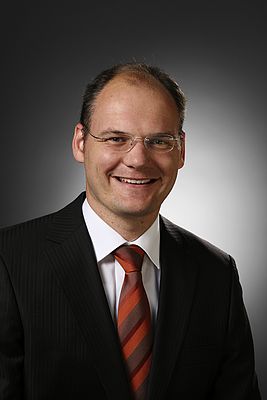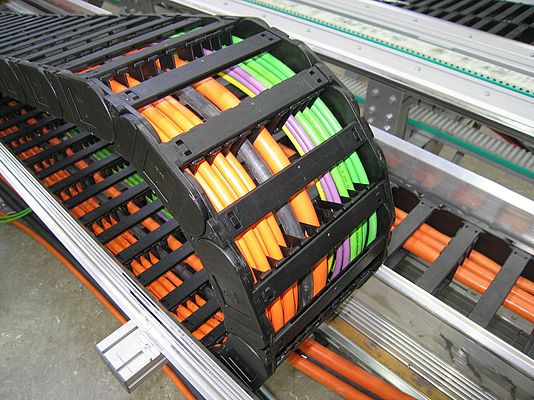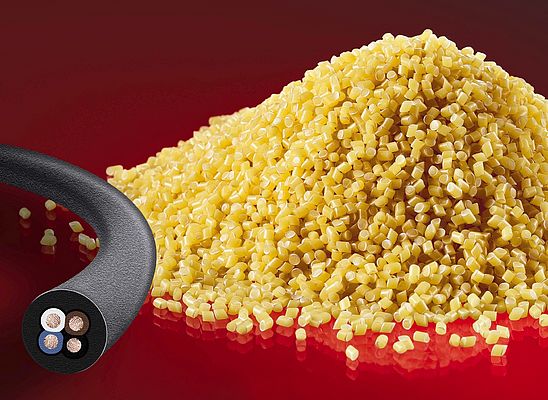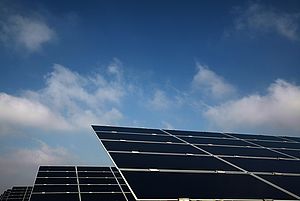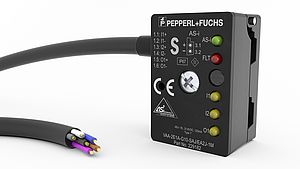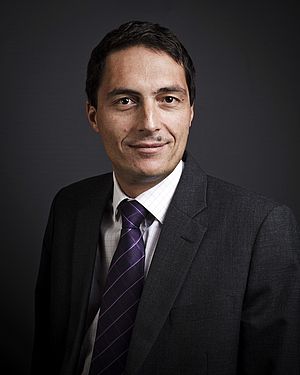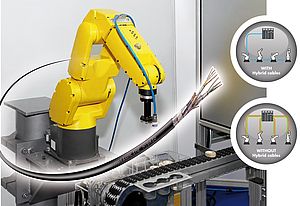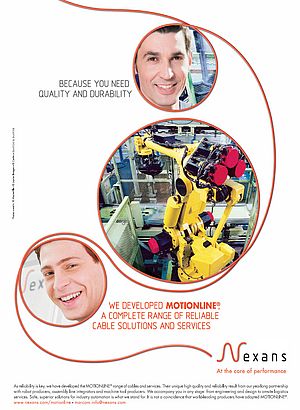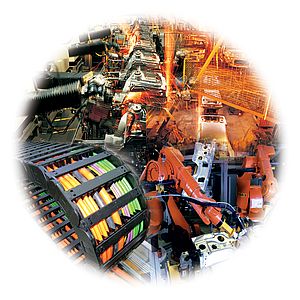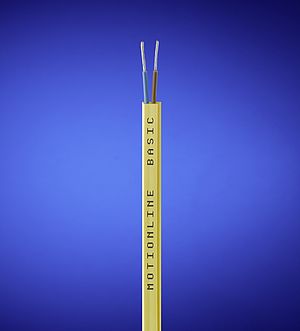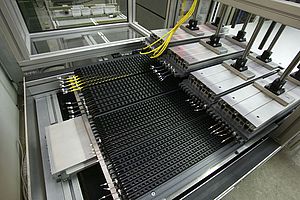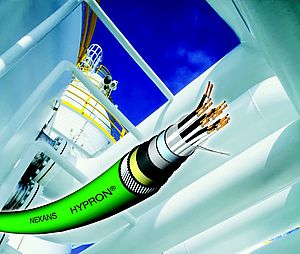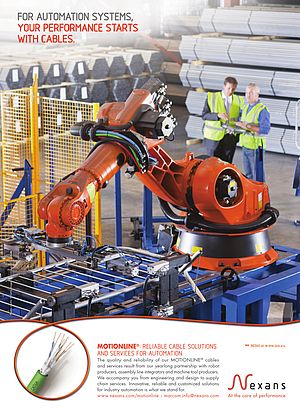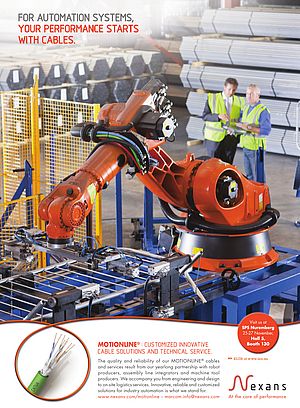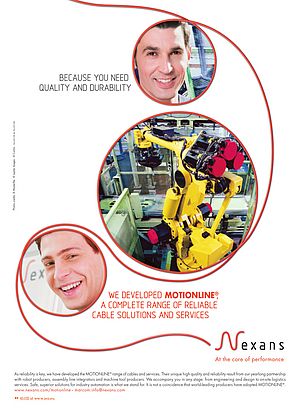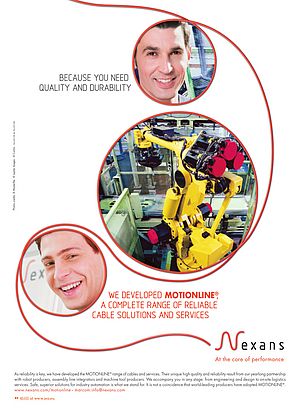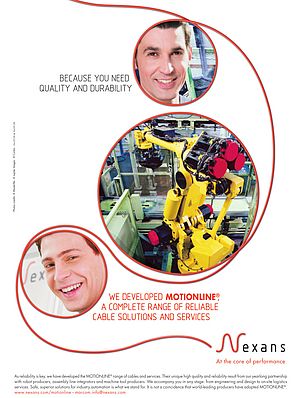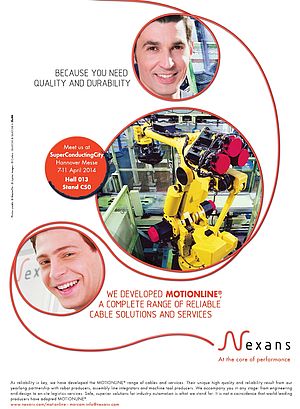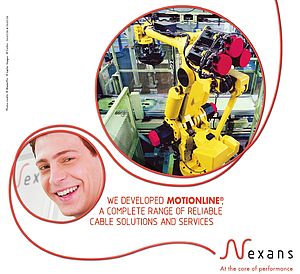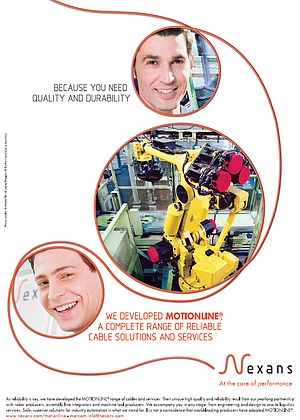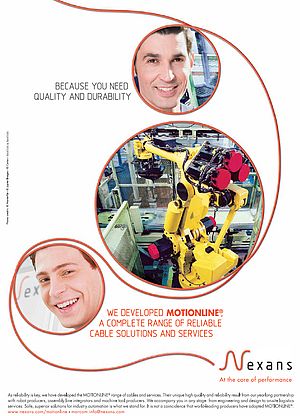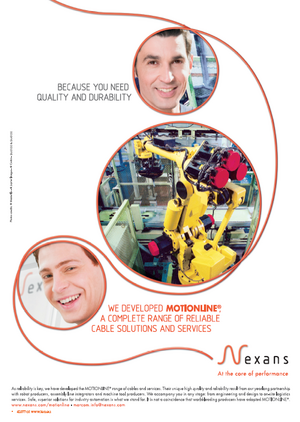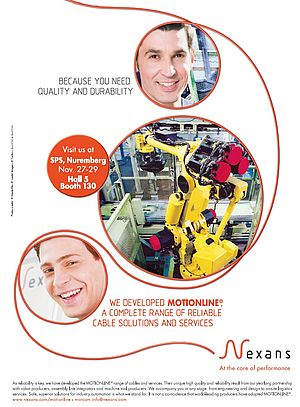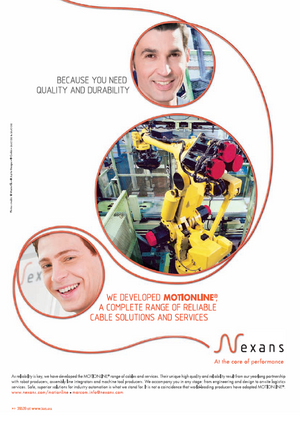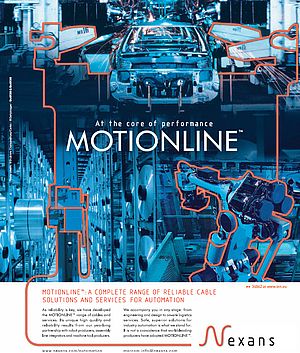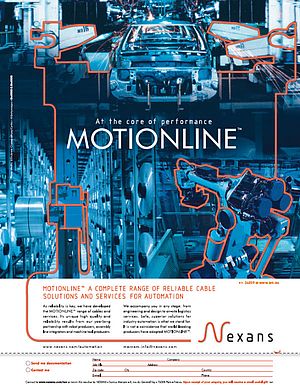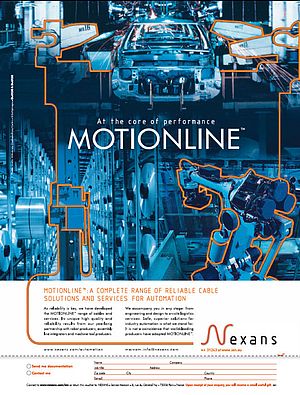IEN: Mr Merklein, your company has been successfully on the market for more than 100 years now. Could you please give us a brief overview over Nexans’ history, as well as the milestones in the product portfolio?
Merklein: The history of Nexans is highly linked with break-through innovations and new technologies that bring value to the customer. The basis of the company was the invention of waterproof cables applying a coating of lead over paper by François Borel. In 1897 the new Société Française de Câbles industrialized this technology. This company became Alcatel Cable in 1991 after a long history of Mergers and Acquisitions adding technological expertise to the group. From optical fiber cables over halogen-free flame retardant materials to processes like cross-linking, the group was always a pioneer of its industry. After the spin-off from Alcatel in 2000, Nexans took over companies like Olex (Australia) or Madeco (Chile) to be closer to its customers in emerging countries and focused even more on innovation. Today, as worldwide leader in the cable industry with plants in 39 countries, Nexans puts a high emphasis on R&D with its international Nexans Research Center and several Competence Centers in the world.
The Automation market is a good example for the evolution and strategy of Nexans. With acquisitions such as Cabloswiss (2004) and Intercond (2008) it strengthens its position in strategic markets while using its R&D expertise to introduce new technologies such as the outstanding TPM insulation, the new flame retardant PUR Medoxprotect-S jacket material or our new cable family that is suited for customers with the highest dynamical requirements.
IEN: With its cabling solutions, Nexans is serving many different and diverse branches, like infrastructure, construction and industry. Is this fact an advantage in times of economic crisis?
Merklein: Yes, the long-term strategy of the group clearly pays out in the crisis. With energy cables as its core, Nexans is therefore active in three specialty markets: energy infrastructure, industry, and building. Nexans has strengthened its customer focus, for example by a Key Account Management organization, while also expanding the presence in emerging countries to broaden our worldwide offer. Even if we are also affected by the crisis, we are very confident in weathering this situation and to be in a very good position as soon as the markets recover.
IEN: Which economic branches are performing well currently?
Merklein: The situation in the energy infrastructure is still very promising, in particular for high-voltage projects and the business of the recently acquired Madeco in South America. But also in the industry segment, markets like rolling stock (railways) or aerospace show a good resilience in the current crisis and of course also emerging segments such as renewable energies keep their dynamic growth path.
IEN: At present, 21 percent of your total turnover is generated by cabling solutions for industry. With an increasing or declining tendency?
Merklein: Of course the impact of the crisis on some of the industry markets, for example automotive, machinery or oil & gas, was very significant and thus the share of about 20% is currently slightly lower. However it is clear that our long-term goal is to increase the business in the industry and in particular in the strategic segments like Automation, that offers solutions for the machinery industry and Robotics, and markets like rolling stock, aerospace or wind energy.
IEN: With reference to the machine building industry: In which branches are your cables primarily used, and what makes them unique?
Merklein: We consider ourselves as the European market leader for dynamical applications. Whenever there is a cable in movement used in the automotive industry or other manufacturing businesses we offer reliable solutions. Our main customers are the producers of machine tools, robots and special machineries which expect cables that withstand the harsh manufacturing environment, meet the international standards and - overall - are safe, reliable and economical. The product scope of Nexans is very wide and includes chain cables, servo motor cables, encoder, control and bus cables as well as special cables for robotics. With the acquisitions of Cabloswiss and Intercond, a leading manufacturer of Automation cables, we have strengthened our presence in this market and can offer our customers a global service. Really outstanding in the marketplace is our focus on testing. We have made heavy investments into our Automation Application Center that is part of the Nexans Research Center and allows proofing the cables’ properties under realistic conditions. During these tests, diverse bending, stretching and torsion movements are simulated to reflect the loads in the later applications as power and data cables.
As a result of our intensive R&D efforts we have not only been pathfinder for industry standards such as Profibus or ASI, but we have also introduced innovative material solutions to the market. Latest example is the new generation of servo motor cables which we present first during the SPS exhibition in Nuremberg and that is designated for extreme dynamic loads such as a maximum speed of 300 m/min.
IEN: Where do you still see potential to optimize the quality of your cabling solutions?
Merklein: A bigger emphasis on the reliability of the cables and more demanding machines with higher speed and acceleration are for sure two challenges that will be of growing importance for Automation cables. Nexans answers these trends by strengthening its Automation Application Center with investments in new testing facilities. At the same time we are introducing a new cable family for higher dynamic loads which includes the already discussed servo motor cables. This family will be further extended, for example by a new bus cable that is optimised for challenging applications and can transmit digital signals up to 100 Mbps and is thus reflecting also the trend in the industry for higher data transmission rates.
IEN: In the fields of factory and process automation – but also in the area of building automation, for example – wireless technologies are increasingly used to transmit data. How do you meet this challenge?
Merklein: Wireless systems are of course to certain extend a threat for a part of our cable range. On the other hand, all these devices have to be integrated into the existing systems and thus also require cables for the connecting. In addition to that, we see more and more demands for a decentralized control where power and data transmission is combined and realized by a hybrid cable solution.
Facts & Figures
Founded: 1897
Employees: 22.400
Headquarters: Paris, France
Turnover 2008: 6,8 Billion Euro
Main products: Power network cabling, telecom network cabling, industrial cabling, indoor cabling, cablemaker supply, services



